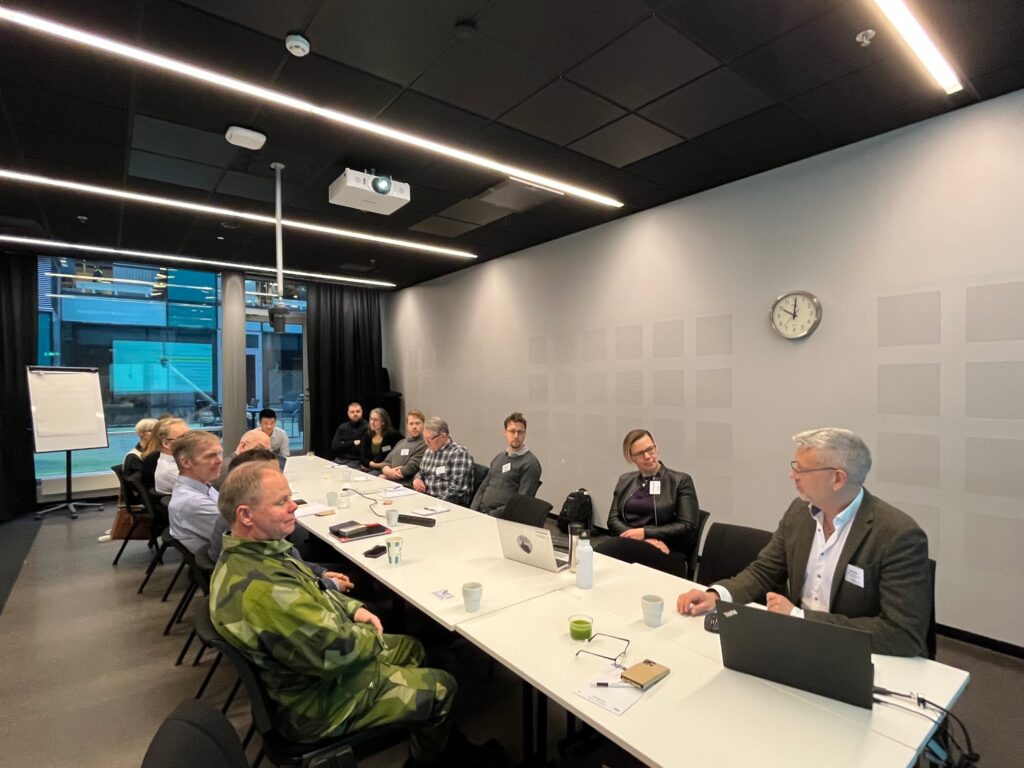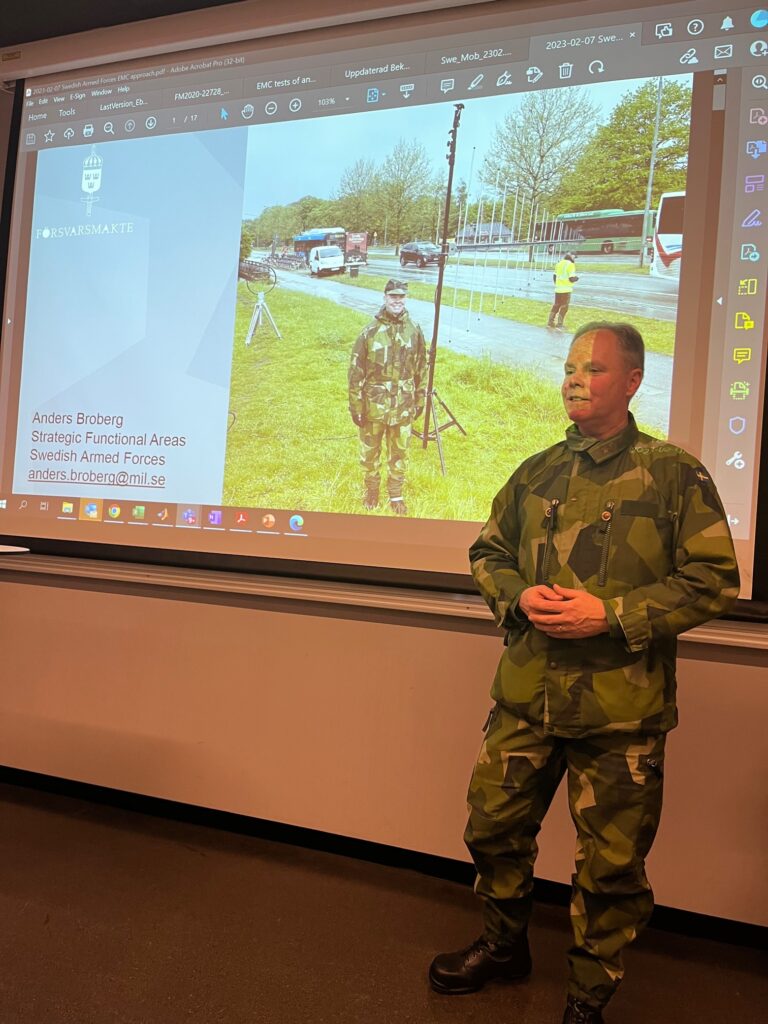EV chargers may cause disturbances for other infrastructure, which raises the issue of electromagnetic compatibility. The defense forces of Sweden have identified a need to discuss solutions to secure that the disturbances from EV chargers and from big charging sites, are kept within controlled limits. These limits protect digital communication but may also apply to the safe operation of pacemakers, autonomous vehicle navigation systems, etc.
On Tuesday 7 February 2023, Theme 2 held a workshop on EMC and charging. Participants were representatives from the Swedish Armed Forces, FMV, FOI, FRA and researchers from the Swedish Electromobility Centre. The aim of the day was to highlight the potential EMC issues posed by an extensive infrastructure of charging technologies, especially with regard to various forms of fast charging and electric roads.



From the military side, several presentations were given as a basis for discussion. The Swedish Armed Forces use parts of a wide frequency band, from 9 kHz to 3000 GHz, for communications. All known charging technology for electric vehicles, conductive as well as inductive, static as well as dynamic, transfers energy through switched technology with frequencies in this range. Measurements on the various electric road solutions that have been demonstrated or are being demonstrated on Swedish roads suggest that there are EMC challenges in one or more frequency ranges for all technologies. Traditional contact line railway technology also has these EMC problems. Less well known to most is that special EMC protection is used in the railway context without us necessarily noticing it as it can look like guard rails for example. Similar examples can be found in both solar and wind power generation and the defense has had to intervene several times to have such systems upgraded to an acceptable EMC level. The measurements on charging systems that have been made are on systems with a vehicle on an electric road or at one fast charging station. What we do not know is how the rapidly increasing amount of charging infrastructure, with fast charging stations with 10’s to maybe 100’s of simultaneously charging electric vehicles or electric roads with heavy traffic, affects the electromagnetic interference level.
The workshop resulted in both an increasing awareness of the problem and the formation of a working group that so far includes representatives from the Ministry of Defence, LTH, LuTH and RISE. Other interested parties are welcome and are asked to contact Mats Alaküla at LTH (mats.alakula@iea.lth.se). The task of the working group is to develop a project plan to build more knowledge, partly through measurements and partly through model building.